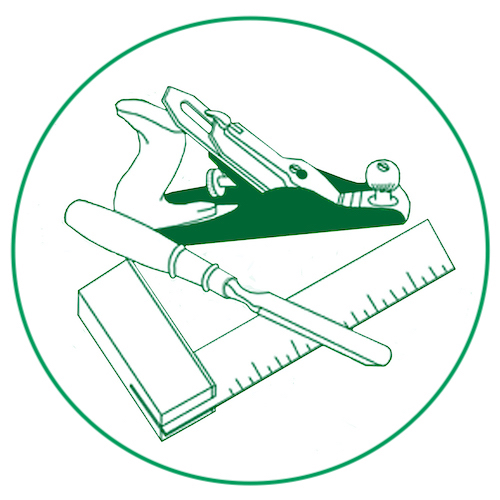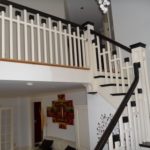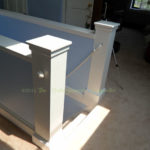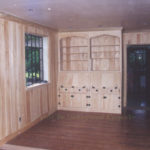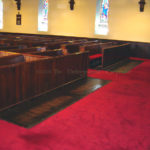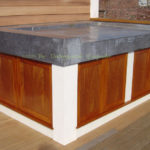Much of what I do involves architectural woodworking and, more recently restoration projects. What does that mean?
Architectural woodworking is the process of creating products made from wood that will be used for the design and function of buildings and structures. This usually involves making strong, attractive pieces that will be used or seen by homeowners . . . Furniture, flooring, cabinets, doors, stairways, and many more structures found in the home or in a building can be considered architectural woodworking.
Dan Cavallari, “What Is Architectural Woodworking?”
It can also include custom-made trims, moldings, and paneling. Unlike joists, studs, and the other wood in a house that gets covered up, architectural woodwork remains visible.
Restoration woodworking/carpentry involves re-building parts or all of old houses or other buildings.
Restoration carpenters. . . understand traditional construction techniques and how to read the “ghost marks” of a home, such as traces of original structures that may have been modified centuries ago. Some of the primary services of restoration carpenters include
* Restoring old windows so they’re relatively energy-efficient yet retain their original materials and detailing
* Repairing, restoring and replicating detailed wood molding and other millwork
* Shoring up old structures with minimally invasive and/or invisible techniques
* Replicating and blending wood finishes
* Modernizing historic buildings to meet current standards for accessibility, energy-efficiency, safety and other performance factors
* Dismantling and reassembling homes, barns and other buildings.
Philip Schmidt, “What Does a Restoration Carpenter Do?”
In the strict sense, restoration carpentry requires using tools and materials identical to those used in the original building process.
In other cases, a property owner may want to preserve as much as possible about an original building, while also using modern materials and interior aesthetics. I apply the latter approach.
While I appreciate, collect, and in some cases use old tools, I also subscribe to the philosophy of the Shakers, who advocated for working as efficiently as possible to have more time for sacred pursuits. Consequently, they supported—and in some cases invented—the latest machines and scientific techniques, with a commitment to exquisite craftsmanship. As I have said before, my version of that is, “Work smarter, not harder.”
Resources
For a more detailed discussion of architectural woodworking, check out Dan Cavallari. 2020. “What is Architectural Woodworking?” WiseGEEK. https://www.wisegeek.com/what-is-architectural-woodworking.htm
This piece summarizes the practice of architectural woodworking/carpentry: Schmidt, Philip. 2018. What Does a Restoration Carpenter Do? Networks. https://www.networx.com/article/restoration-carpenter
For more about the Shakers’ ideas, check out: “The Shakers: Hands to Work, Hearts to God”: https://www.pbs.org/kenburns/the-shakers/about-the-shakers
